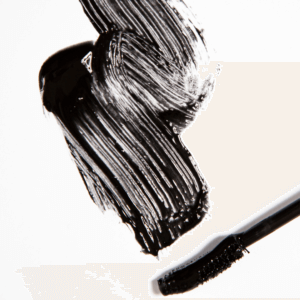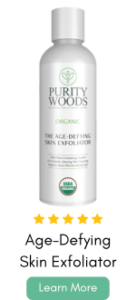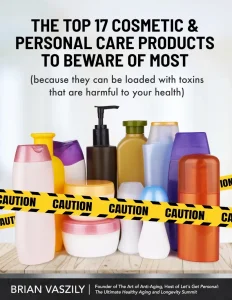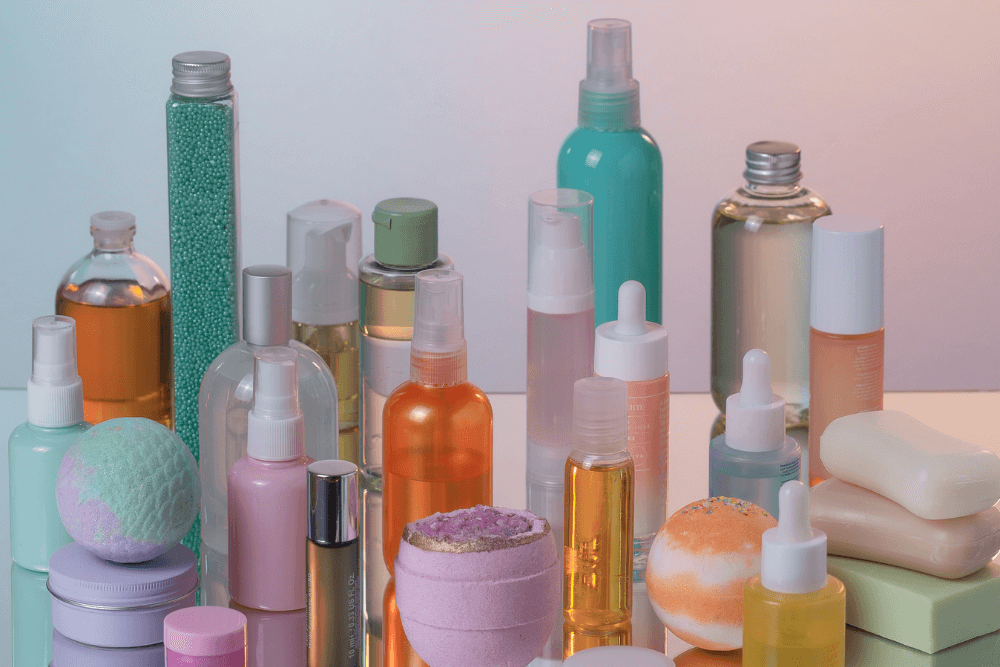You carefully choose your skincare products and perhaps trust brands that claim to be “clean” and “natural.” Unfortunately, many products that promise to nourish your skin safely are laced with toxic chemicals that can work against your skin – and against your health.
Today, one of the most widespread and concerning in cosmetics and personal care products is PFAS (per- and poly-fluoroalkyl substances).
What you apply to your skin is largely consumed into your body, and PFAS are also widely known as “forever chemicals” because they don’t break down easily – in the environment or in your body. Instead, they can accumulate over time and cause a range of serious health issues.
From increasing heart attack and stroke risk to hormone disruption and immune suppression, the risks are alarming. Even worse? Manufacturers are not even required to identify PFAS on their labels! That’s why your understanding of where PFAS hide and how to avoid them is essential for protecting your health and ensuring that your skincare truly supports your well-being.
Let’s explore why these chemicals are so dangerous, how they ended up in skincare, and—most importantly—what you can do to keep them off your skin and out of your body.
1. What Are PFAS and Why Are They Called “Forever Chemicals”?
 PFAS are a group of thousands of synthetic chemicals used primarily for their resistance to water, oil, and heat. Originally developed for industrial use, they quickly made their way into everyday products—including cosmetics and personal care items.
PFAS are a group of thousands of synthetic chemicals used primarily for their resistance to water, oil, and heat. Originally developed for industrial use, they quickly made their way into everyday products—including cosmetics and personal care items.
The reason they are called “forever chemicals” is chilling: they do not break down easily, meaning they persist in the environment and accumulate in the body. Once absorbed, they may remain in your system for years.
Unfortunately, PFAS are also now prevalent in municipal water supplies. They are used to make non-stick cookware, water- and stain-resistant clothing and furniture, certain home cleaning products, and grease-resistant food wrappers such as those at fast food restaurants.
Their presence in skincare products is particularly concerning because of their ability to seep into the skin and enter the bloodstream. Unlike other toxins that the body can eventually process, PFAS continues to build up over time, increasing the risk of long-term health problems.
And the worst part? Most people do not even realize they are putting them on their skin and therefore feeding them into their bodies routinely.
2. Why Are PFAS Used in Skincare and Beauty Products?
 The beauty industry uses PFAS to create products that are waterproof, long-lasting, and feel smooth.
The beauty industry uses PFAS to create products that are waterproof, long-lasting, and feel smooth.
From sweat-resistant sunscreens to no-smudge mascaras to anti-aging creams that feel silky, PFAS are behind that flawless finish. They also help products spread evenly and stay put for hours, making them a favorite among manufacturers. But at what cost?
Many long-wear cosmetics, especially waterproof foundations, lipsticks, and eye makeup, contain PFAS. Skincare creams and lotions often use them to enhance texture.
Again, though, the big problem is that these chemicals (like so many others in typical cosmetics) do not just sit on your skin – they are absorbed into your body. chemicals
Studies show that topical exposure contributes to PFAS accumulation in the body, leading to potential health risks. Again, many products do not list PFAS on their labels, making it nearly impossible for consumers to know they are being exposed. And even when they do list it in their ingredients, it can be quite challenging to understand (for example, perfluorohexylethyl triethoxysilane, polytetrafluoroethylene (PTFE), and trifluoropropyl cyclotetrasiloxane are just a few types of PFAS).
Fortunately, as you will discover further below, there is an easy way for you to avoid these “forever chemicals..”
- The Health Risks of PFAS in Skincare
 One of the most alarming dangers of forever chemicals (PFAS) is their impact on heart health. Research has linked PFAS exposure to higher levels of LDL (“bad”) cholesterol, a key driver of plaque buildup in arteries. Over time, this plaque can harden and narrow blood vessels, significantly increasing the risk of heart attacks and strokes.
One of the most alarming dangers of forever chemicals (PFAS) is their impact on heart health. Research has linked PFAS exposure to higher levels of LDL (“bad”) cholesterol, a key driver of plaque buildup in arteries. Over time, this plaque can harden and narrow blood vessels, significantly increasing the risk of heart attacks and strokes.
A 2022 study even found that people with higher PFAS levels in their blood had a greater likelihood of developing cardiovascular disease. Since PFAS are nearly impossible for the body to break down, they can accumulate over years, silently wreaking havoc on the circulatory system.
Hormone disruption is a major concern. PFAS interfere with the endocrine system, throwing off thyroid and reproductive hormone balance. Studies show this may lead to an increased risk of reproductive diseases and a reduction in fertility.
Studies also show PFAS may weaken the immune system, reduce vaccine effectiveness in children, and increase overall susceptibility to illness.
Liver and kidney damage are another risk, as these organs struggle to filter out PFAS, leading to toxicity over time. Some PFAS have even been linked to elevated cancer risks. One study found prolonged exposure to PFAS doubled the risk of cancer diagnosis in women.
What makes PFAS particularly dangerous is their bioaccumulation—meaning they build up in your body faster than they can be eliminated. Unlike some toxins that the body can filter out and remove, PFAS may remain in tissues for years, compounding their harmful effects.
Even at low doses, chronic exposure has been associated with adverse health outcomes, making their presence in skincare products especially alarming.
4. Where PFAS Hide in Your Skincare Products
Again, PFAS are not always easy to spot on ingredient labels. Many brands disguise them under complex chemical names, making it difficult for consumers to identify them.
Some of the most common PFAS-related ingredients include:
- PTFE (Polytetrafluoroethylene) – Often found in powders, foundations, and anti-aging creams.
- Perfluorodecalin – Used in some lotions and serums for improved spreadability.
- Perfluorooctyl Triethoxysilane – Found in waterproof and long-lasting makeup.
- Perfluorooctanoic Acid (PFOA) – Previously common in beauty products, still appearing in some formulations.
- Perfluorooctane Sulfonate (PFOS) – A widely used PFAS, now restricted in some countries but still detected in products.
- Perfluorobutane Sulfonate (PFBS) – A substitute for PFOS, but still carries risks.
- Perfluorohexane Sulfonate (PFHxS) – Found in skincare and cosmetic formulas for longevity.
- Polyperfluoromethylisopropyl Ether – Used in some foundations and lotions for a smooth texture.
- Perfluorononyl Dimethicone – A silicone-PFAS hybrid commonly used in personal care products.
- Perfluorodimethylcyclohexane – Used in some skincare formulations for water resistance.
- Teflon™ (PTFE in ingredient lists) – Found in anti-aging creams and cosmetics.
These chemicals do not always appear on labels due to regulatory loopholes, so avoiding waterproof and long-lasting products and choosing USDA Certified Organic skincare remains the best way to steer clear of PFAS exposure.
Several studies have tested popular beauty brands and found alarming levels of PFAS contamination across hundreds of products. Many companies do not even realize their products contain them, as they may be introduced during the manufacturing process.
Without proper regulation, the presence of PFAS in cosmetics continues unchecked, leaving consumers unknowingly exposed.
5. The Environmental Toll of PFAS in Skincare
 PFAS contamination is not just a personal health issue—it is an environmental disaster. Every time you rinse off a PFAS-laden skincare product, those chemicals go down the drain and into waterways.
PFAS contamination is not just a personal health issue—it is an environmental disaster. Every time you rinse off a PFAS-laden skincare product, those chemicals go down the drain and into waterways.
They do not break down naturally, leading to widespread pollution. Scientists have found PFAS in drinking water, soil, and even rain.
The U.S. Environmental Protection Agency (EPA) has flagged PFAS as a serious contaminant, and some states are pushing for restrictions. However, regulation is slow, and millions of people continue to be exposed.
Choosing PFAS-free skincare is not just about protecting your own health—it is about preventing further harm to the planet.
6. Greenwashing & Loopholes: Why “Clean Beauty” Is Not Always Clean
The rise of “clean beauty” has made consumers more cautious about ingredients, but many brands still use misleading labels.
A product may claim to be “natural” or “non-toxic” while containing hidden PFAS and other potentially harmful, synthetic ingredients. We call this misrepresentation “greenwashing.” Unlike the EU, which bans certain PFAS in cosmetics, the U.S. has no strict regulations requiring disclosure.
Brands often take advantage of loopholes, avoiding full transparency. Even products marketed as “PFAS-free” may be contaminated through packaging or ingredient sourcing.
Without third-party testing, it is difficult to trust these claims. This makes it even more critical to choose USDA Certified Organic skincare (more on this in a bit), which has far stricter purity standards.
7. How to Avoid PFAS in Skincare (and What to Look for Instead)
To truly protect yourself from PFAS, become an ingredient detective. Look for skincare brands that are transparent about their sourcing and manufacturing.
- Avoid waterproof, long-lasting cosmetics
- Try to check all products you put on your body for hidden PFAS-related ingredients
- Choose USDA Certified Organic skincare, which is free from synthetic chemicals, including PFAS
8. A Safer Alternative: The Importance of USDA Certified Organic Skincare
Choosing USDA Certified Organic skincare is one of the most effective ways to protect yourself from PFAS. Organic skincare products are made with high-quality, natural ingredients that are grown without synthetic pesticides, chemical fertilizers, or genetic modification. This means they don not carry the risk of contamination from harmful agricultural chemicals.
USDA Certified Organic products also exclude synthetic toxins, including PFAS, parabens, phthalates, artificial fragrances, and other harmful additives. Because they undergo strict third-party testing, you can trust that what is inside is pure, effective, and safe for your skin and overall health.
A PFAS-Free Solution: The USDA Certified Organic Age-Defying Skin Exfoliator
 Exfoliation is a vital part of your skincare routine to achieve your healthiest, youngest-looking skin. However, you definitely do not want to be rubbing harmful chemicals such as PFAS into your skin in the process of exfoliation!
Exfoliation is a vital part of your skincare routine to achieve your healthiest, youngest-looking skin. However, you definitely do not want to be rubbing harmful chemicals such as PFAS into your skin in the process of exfoliation!
That is why it is essential to choose a USDA Certified Organic skin exfoliator. Many conventional exfoliants contain PFAS in the form of small plastic microbeads, synthetic preservatives, and other hormone-disrupting chemicals that may be absorbed directly into your skin—that not only eliminate the “care” part of skincare, it also unnecessarily puts your health at risk.
That is why Purity Woods’ Age-Defying Skin Exfoliator stands out as the ultimate safe and effective alternative. This 100% plant-based exfoliator gently removes dead skin cells and built-up pollutants without exposing your skin to synthetic toxins.
Instead of relying on questionable chemicals, it harnesses nature’s finest exfoliants, including:
- Buckwheat flour, sorghum flour, and willow bark – Natural exfoliators that slough away dead skin and help clarify the complexion.
- Bakuchiol – A gentle, plant-based alternative to retinol that boosts collagen and elastin without irritation.
- A powerful blend of anti-aging botanicals – Providing deep nourishment while supporting radiant, healthy skin.
And because it is USDA Certified Organic, you can be sure it is:
- Free from PFAS and other synthetic ingredients linked to hormone disruption and other health issues
- Non-GMO and made from plants grown without pesticides, herbicides, or chemical fertilizers
- Strictly and independently verified for purity and safety
With Purity Woods’ Age-Defying Skin Exfoliator, you are not just exfoliating—you are safeguarding your skin from harmful contaminants while revealing a brighter, more youthful glow.


